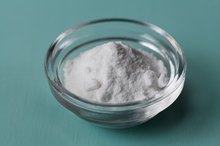What does fact checked mean?
At Healthfully, we strive to deliver objective content that is accurate and up-to-date. Our team periodically reviews articles in order to ensure content quality. The sources cited below consist of evidence from peer-reviewed journals, prominent medical organizations, academic associations, and government data.
The information contained on this site is for informational purposes only, and should not be used as a substitute for the advice of a professional health care provider. Please check with the appropriate physician regarding health questions and concerns. Although we strive to deliver accurate and up-to-date information, no guarantee to that effect is made.
Middle Ear Effusion Treatment
Middle ear effusion is caused by a presence of fluid in the middle ear without an actual ear infection. While children (or adults) with a traditional ear infection will experience pain and often other nasal symptoms, people who have a middle ear effusion do not feel or act sick. Middle ear effusion is caused by a blockage in the Eustachian tube, which carries fluids through the ear. When this tube is blocked, fluid builds up in the middle ear. Allergies and respiratory infections can prompt this to occur.
If you are experiencing serious medical symptoms, seek emergency treatment immediately.
Minor Treatments
Most middle ear effusion infections will clear up on their own. For a child who is healthy in all other respects, treatment might include an environmental or lifestyle change. For example, doctors may recommend that the child avoid exposure to cigarette smoke, or that an infant maintain a breastfeeding routine. A change in a day care setting may also be beneficial. If the child experiences regular allergies, avoiding allergic triggers (such as pollen or dust) may also help. In some cases, even chewing gum has been known to improve symptoms for some children.
- Most middle ear effusion infections will clear up on their own.
- For a child who is healthy in all other respects, treatment might include an environmental or lifestyle change.
Medical Intervention
Ear Odor & Itching in a Child
Learn More
If the fluid persists inside the ear after six weeks, doctors may recommend more thorough treatment options. They may perform an ear/hearing test, they may keep observing and examining the ear on a regular basis, or try a dosage of antibiotics. Unfortunately, if the middle ear effusion becomes chronic or continues beyond the first administration of antibiotics, the effectiveness of these medications can be decreased. A one-time antibiotic or antimicrobial treatment is possible, but beyond that other measures may need to be considered.
In some cases, doctors may prescribe antihistamines or other allergy medications. These medications would only benefit the child in clearing up any nasal or other allergy symptoms coinciding with the ear infection; middle ear effusion itself cannot be treated with these medications.
- If the fluid persists inside the ear after six weeks, doctors may recommend more thorough treatment options.
- Unfortunately, if the middle ear effusion becomes chronic or continues beyond the first administration of antibiotics, the effectiveness of these medications can be decreased.
Severe Cases
In some cases, if middle ear effusion persists over a longer period of time (3 months or more), symptoms can become severe. The fluid in the ear may make hearing more difficult, which in turn can delay speech development. doctors may recommend more thorough treatment options. to be administered regularly for children with persistent middle ear effusion problems.
Doctors may even suspect that a structural abnormality of the middle ear could be the underlying problem if a child has persistent middle ear effusion. Scans and tests would be needed to determine the validity of this suspicion.
Surgery is also an option, which may include putting tubes into the child's ears to strengthen the middle ear area. In the past, doctors would perform surgery if the middle ear effusion persisted beyond three months. However, in recent years (since 2004), doctors have elected to perform surgery only if the condition persists and significant hearing loss occurs. If a child is living with middle ear effusion with no significant side effects, surgery is not medically necessary.
- In some cases, if middle ear effusion persists over a longer period of time (3 months or more), symptoms can become severe.
- Doctors may even suspect that a structural abnormality of the middle ear could be the underlying problem if a child has persistent middle ear effusion.
Related Articles
References
- eMedicine
- National Institute of Health (NIH)
- Gerena LA, DeCastro A. Knee Effusion. StatPearls Publishing. Updated May 5, 2019.
- Frush TJ, Noyes FR. Baker's Cyst: Diagnostic and Surgical Considerations. Sports Health. 2015;7(4):359-65. doi:10.1177/1941738113520130
- Shirtliff ME, Mader JT. Acute septic arthritis. Clin Microbiol Rev. 2002;15(4):527-44. doi:10.1128/cmr.15.4.527-544.2002
- Johnson MW. Acute knee effusions: a systematic approach to diagnosis. Am Fam Physician. 2000;61(8):2391-400.
- Pathria MN, Chung CB, Resnick DL. Acute and Stress-related Injuries of Bone and Cartilage: Pertinent Anatomy, Basic Biomechanics, and Imaging Perspective. Radiology. 2016;280(1):21-38. doi:10.1148/radiol.16142305
- Vaidya B, Bhochhibhoya M, Nakarmi S. Synovial fluid uric acid level aids diagnosis of gout. Biomed Rep. 2018;9(1):60-64. doi:10.3892/br.2018.1097
- Gupte C, St mart JP. The acute swollen knee: diagnosis and management. J R Soc Med. 2013;106(7):259-68. doi:10.1177/0141076813482831
- Akbarnia H, Zahn E. Knee Arthrocentesis. StatPearls Publishing. Updated December 16, 2018.
- Brannan SR, Jerrard DA. Synovial fluid analysis. J Emerg Med. 2006;30(3):331-9. doi:10.1016/j.jemermed.2005.05.029
- Patel DR, Villalobos A. Evaluation and management of knee pain in young athletes: overuse injuries of the knee. Transl Pediatr. 2017;6(3):190–198. doi:10.21037/tp.2017.04.05
- Martin CL, Browne JA. Intra-articular Corticosteroid Injections for Symptomatic Knee Osteoarthritis: What the Orthopaedic Provider Needs to Know. J Am Acad Orthop Surg. 2018. doi:10.5435/JAAOS-D-18-00106
- Choi YJ, Ra HJ. Patient Satisfaction after Total Knee Arthroplasty. Knee Surg Relat Res. 2016;28(1):1–15. doi:10.5792/ksrr.2016.28.1.1
- Valderrabano V, Steiger C. Treatment and Prevention of Osteoarthritis through Exercise and Sports. J Aging Res. 2010;2011:374653. doi:10.4061/2011/374653
- Gupta, C. and St. Mart, J. The acute swollen knee: diagnosis and management. J Royal Soc Med. 2013; 106(7):259-68. DOI: 10.1177/0141076813482831.
- Marx, J. (2010). Rosen's Emergency Medicine: Concepts and Clinical Practice (7th Edition). Philadelphia, Pennsylvania: Mosby/Elsevier. ISBN 978-0-323-05472-0.








